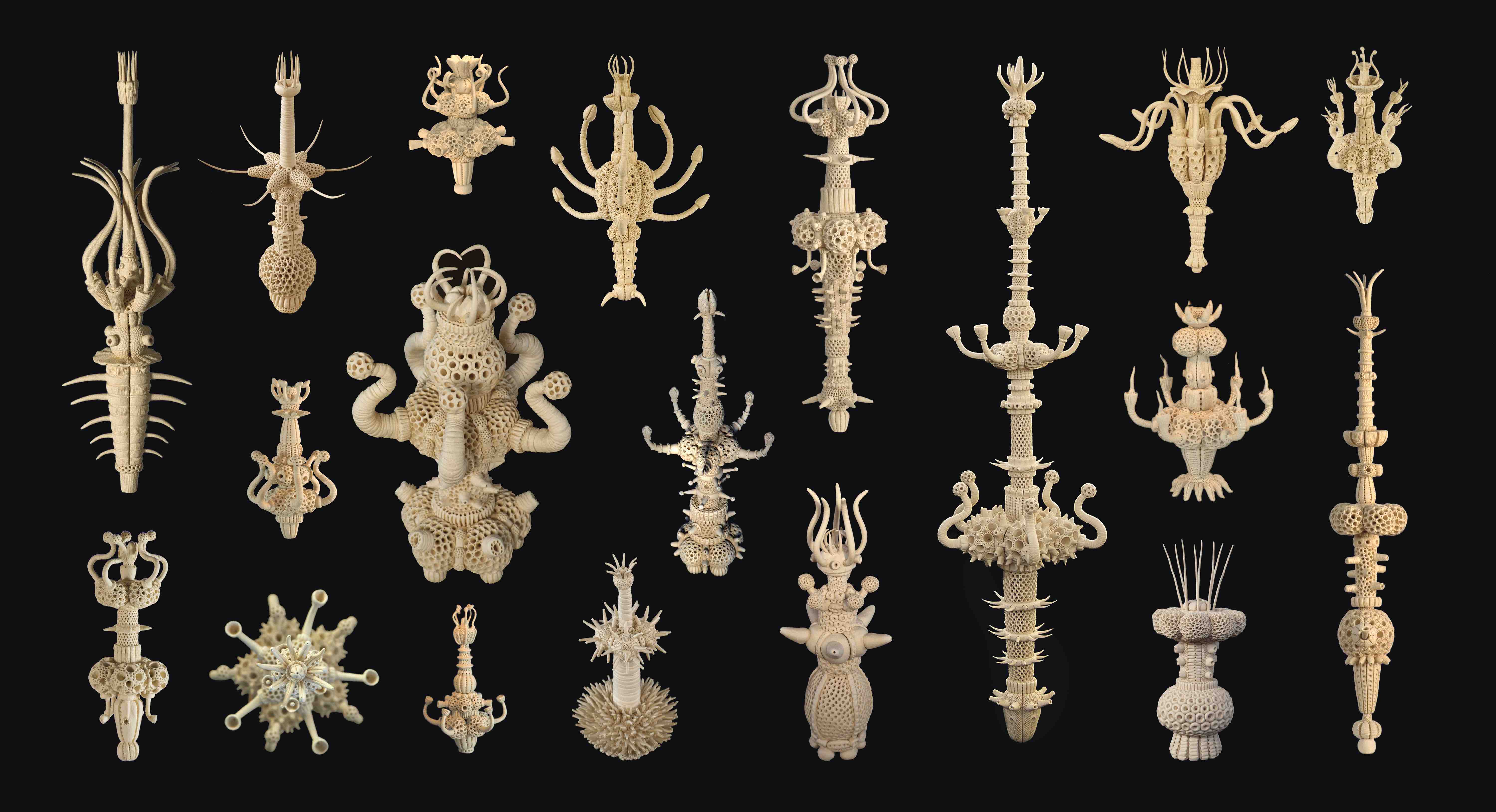Alexis Rago is based in Lincolnshire. He originally studied biology at Manchester University before attending the Institute for Art and Restoration in Florence where he won the drawing prize. He has exhibited widely both in the UK and abroad. Alexis was elected Fellow of the Linnean Society of London in 2009. His studio is located in a Methodist chapel in rural England.

Where are you based?
I live and work in a small Lincolnshire village, a quiet place which gives me space to think and work. In the digital world, geographical distant is no longer a serious barrier to engagement with others. Having said this, there is no substitute for the face to face and fortunately I share my studio and life with fellow artist Janet Waring Rago.
Describe your practice for us
I see myself as a chronicler: the descendant of countless generations of beings that have survived against the odds over billions of years. The recognition of this continuity inspires in me an interest in origins and causes. Nevertheless, I live in the here and now and part of this is a strong sense of my own corporeal nature which compels me to work physically with matter. My work as a sculptor involves unmediated contact with substance through my hands. I choose clay as my primary medium for translating haptic experience because it is original, has developed hand in hand with civilisation from the earliest times yet is still full of potential.
I also cultivate sound as part of an inner landscape rendered corporeal through vibration. It is a primary means of communication extended in time and centred in the body. This is why I have become interested in the embedding of sound in sculpture. Space and time inhabited by two modalities, one visible, the other not.
I use pinhole photography as the passage of time captured in a single image. Its long exposures and optical characteristics as well as the analogue nature of its process places it in an interesting relationship with digital image making. It has a resistance that offers a different interpretative stream. When I use video, on the other hand, I see it as a way of explicating narratives that would be otherwise hidden.
The constant search for ways of unifying these ecologies of process is an attempt to deal with what might at first appear as disparate fields of engagement. However, no sooner do I encounter a path that brings them closer together, do I find that they go in different directions, disappearing in a labyrinth of reason and feeling. Perhaps what I am doing is avoiding the predictability that can arise in the making over long periods of time. At the same time I recognise an inevitability in what I do.
What do you mean by inevitability?
Despite what I say about predictability, I work in series. Working iteratively helps me develop and evolve an idea. Between series there are often contradictions. I see these contradictions as a manifestation of incompleteness; of work in progress. Things never finish, they just change. The awareness of this heightens my sense of continuity, a never-ceasing renewal not just a state of being. I see a constant ebb and flow of different processes that form part of a whole as they become sensible through my work: unification, disintegration, time and timelessness. Inevitability is not a precise point but a direction of movement. The passage of time is inevitable, change is inevitable, but the nature of this change is not always knowable; life is too complex for that, too open to the unpredictable.

What themes and ideas do you work with?
At the root of my interests lies a search for origins. an immersion in narratives on different scales, from big history to personal stories. Such narratives inform my methodology which is underpinned by the notion of emergence: how the interaction between simple elements, can give rise to higher orders of complexity. Although the results are often interpreted as biological they are not intended to be representative or illustrative. They arise spontaneously out of behaviours that can be seen most noticeably in the natural world and therefore bear analogy with biological structures.
The material around which I centre my ideas, clay, is an inert, inorganic material that will endure for almost an eternity but once it is fired becomes brittle and fragile. It is the coexistence of permanence of fundamental matter with the impermanence of form that interest me, with its implied tensions and notions such as the desire for immortality and the knowledge that life is fragile.
Reactions to my work often address the alienness and almost complete absence of direct human iconography: I am interested in existential questions dealing with our place and relevance in the universe that challenge the anthropocentric view of the world. Science fiction is a fertile field for such speculations. It intersects with what I liken to imagined archaeology and speculative anthropology. Archaeology, sacred art, and the rituals implied by such things, inform what I do. They are areas in which grasping the ineffable is attempted and their descriptions are articulated in constantly changing language and means of expression.
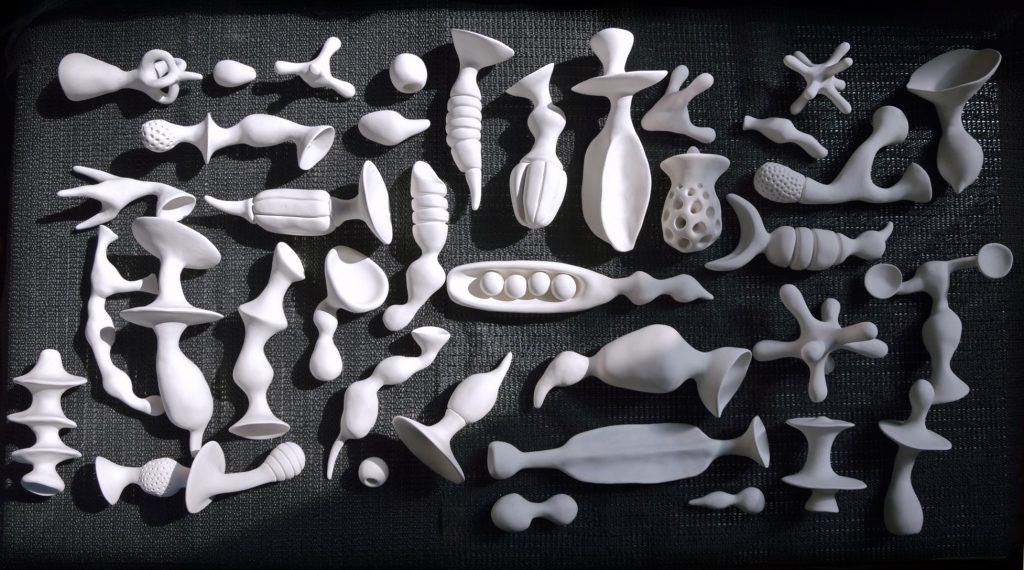
How long have you been practising and by what route did you come to your practice?
My first interest was science. I studied biology attracted by its narratives of complex behaviours and structures. My fascination lay in its visual elements and descriptive storytelling. Realising the constraints of science research on speculative practice, I travelled to Florence, where I studied painting and drawing. It was a time of full immersion in the workshop tradition. I lived there for ten years during which I experimented with a wide variety of mediums on a journey through art history. The weight of tradition in Tuscany was intoxicating, and suffocating.
On my returned to the UK, my work progressively moved towards three dimensions. I began using clay as a plastic means of making the transition. Touch is very important to me. I remember as a child having fevers in which my hands and fingers would feel enlarged and highly sensitive; they became my contact with the outside world.
Some years ago I began a process of renewal setting aside prejudices and assumptions of what I should be doing. At this point I approached clay as an inert, formless mass. With the simple, childlike action of rolling a ball I began to develop and clarify a methodology, accreting simple forms in molecular fashion to create complex structures. This approach has changed and diversified over time to encompass a variety of ideas.
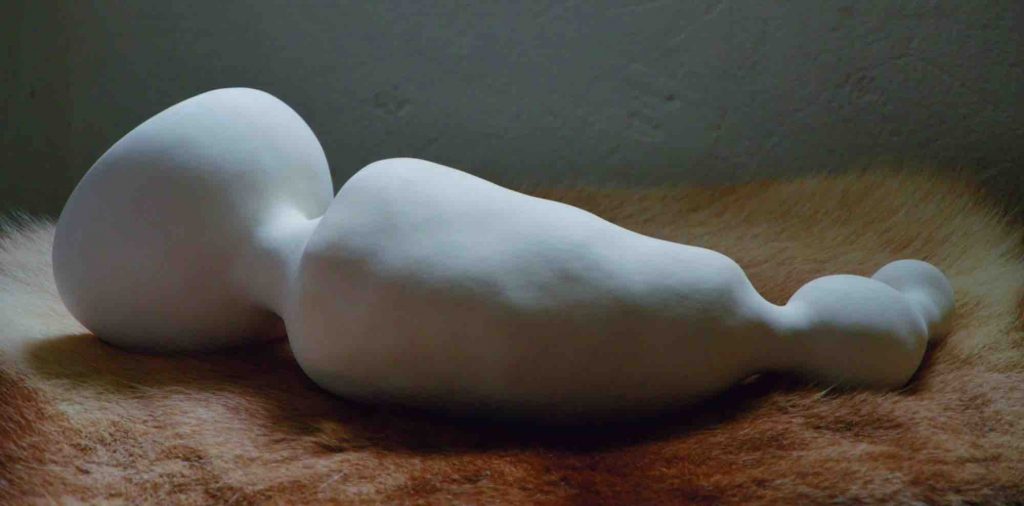
The technical boundaries of ceramic practice must rarely be pushed as far as you push them. What are the challenges involved with producing work of this kind?
The works you are referring to are part of the Chaos Contained series. The idea evolved from very simple forms, evolving over time into more complex structures. I see this as the spontaneous growth in complexity I was talking about earlier. As the works grew in complexity, challenges arose from the fragility of the forms. Gaining experience as pieces became more ambitious I found myself being able to work with my large hands with increasing dexterity. It brings to mind the image of a gorilla delicately handling a vulnerable object.
Your sculptures invite a multitude of readings, evoking at once molecular structures, religious paraphernalia, primordial forms, among other things. But are they decorative pieces?
This I see as a question of context. I don’t see the sculptures as intentionally decorative. For that one would have to read them in much the same way as one might look at a Dogon mask in an interior design environment for instance. The initial intention was not to adorn but to represent, reify a belief or idea. The sculptures are outcomes of process and metaphors. They have a narrative and reason, any aesthetic pleasure would emerge from what one might bring to their reading and in what context.
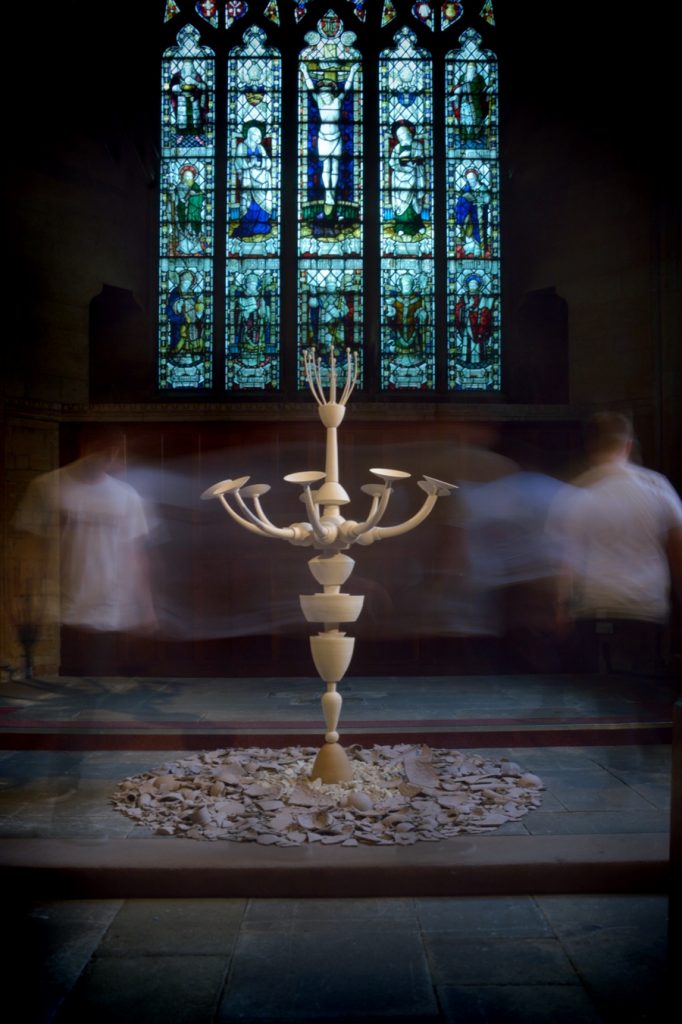
In recent years you have incorporated digital media with your work. How did that come about and why?
As a means of extending the spectrum of engagement in which I worked, I had been experimenting with the notion of the past in the form of recordings being enclosed and unreachable, inhabiting within a physical object occupying the same space in the present. This took the form of audio recorded in the environments that inspired the objects I made, from which those sounds would emanated. This was the seed for a series of much more ambitious work I produced for Chaos Contained, a multimedia touring show curated by the National Centre for Craft and Design.
In Impermanent and Everlasting, sounds of the making of the sculpture emanate from many points on its surface while the surrounding space is immersed in the sounds of the destruction of an unfired clay twin copy. This developed into more ambitious installations at the Chad Varah Chapel during the Frequency Digital Festival in Lincoln and in the bell tower of St John’s, 20-21 Visual Arts Centre. I used recordings harvested on site and from other places which had correspondences with those particular places. Time Passes But Nothing Changes, inspired by ideas of time and action from Pre-Socratic philosophers to present day physics, involves video projections onto sculpture.
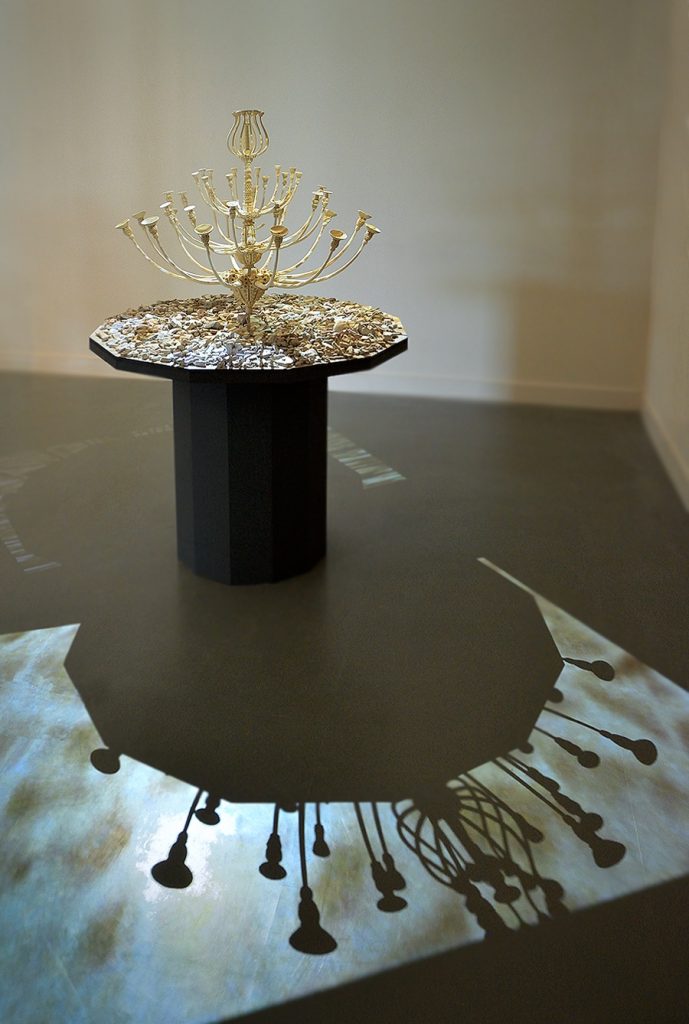
How do you see your work evolving in the future?
I am currently directing my attention away from architectural construction and accretion towards a more informal, poietic development of form. These new works appear more organic and flowing. I see them as the interior counterparts to the former works. I am interested in how the two methodologies present a duality as part of a whole. Following from this I will be starting an MA at Camberwell, University of the Arts London in the Autumn. It will focus initially on the reciprocal transformative relationship between spoken language, sound and solid form, informed by statuary, ritual and universal myths.
What is the most interesting or inspiring thing you have seen or been to recently, and why?
I see inspiring things all around me. I sometimes get the sense of, what is this all about and how has it come about? The fact that I am a privileged witness to all that there is within my ability to perceive, is perhaps the most inspiring thing. The sense that there is anything at all is quite shocking and wonderful. I like recording the dawn chorus outside the studio in the Spring, it is a transportative experience redolent with meaning.
Technology is producing such amazing and fascinating spectacles on all scales and so abundantly that one can become blasé about them. Perfection of manufacture on our scale, is now commonplace in the humblest of items. Things that would have been seen as divine or heretical not so long ago are now throw-away and within the reach of most if not all.
I am always enthralled by the archaeological departments in museums. The handmade is on a human scale. Old clay artefacts, painted wood, metal castings all have Imperfections arising out of the limitations of those that made them. And these limitations have engendered inventiveness and imagination through the ages. I find this inspiring and reflective of the notion that one is a flawed creature striving towards an ideal.
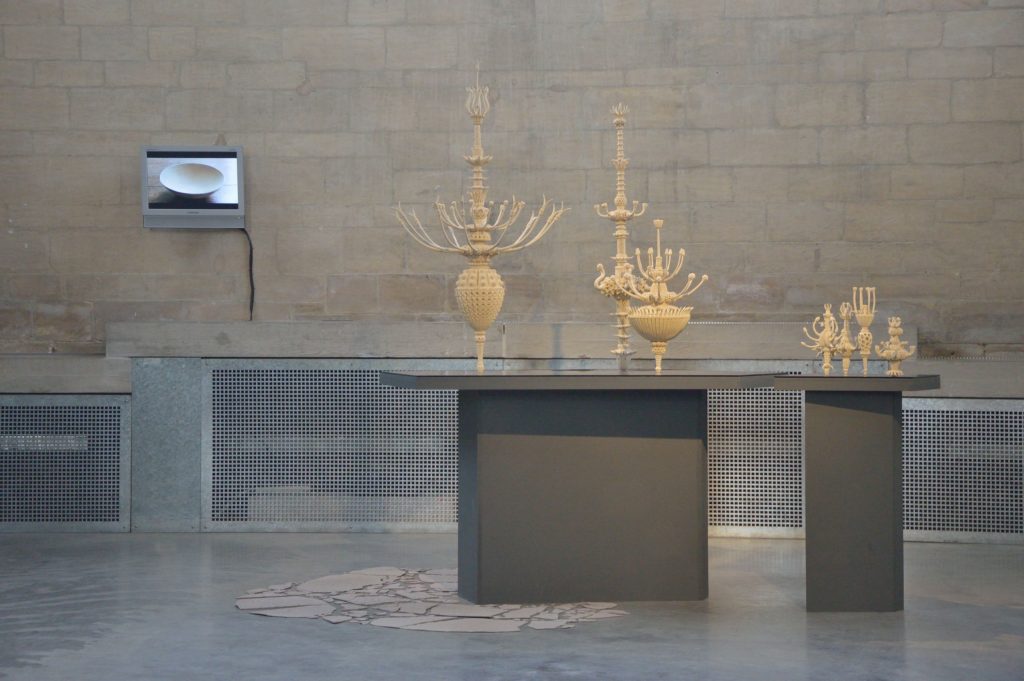
Which other artists’ work do you admire, and why?
This is such a hard question to answer. Historically, an artist I have greatly admired for his humanity of vision and ability to transform his material into something alive and palpable, is Rembrandt.
I would indulgently also mention four authors that have influenced or inspired my thoughts.
The writings of Agnes Arber, botanist and philosopher, her philosophical insight into how the naturalist’s eye translates into artistic vision is deeply thought-provoking.
Robert Graves, The White Goddess, is the story of the Latin alphabet. It ties together, ancient migrations, religious mysteries and the struggle between matriarchy and patriarchy to shape the development of poetry as rooted in the landscape and nature.
Nature as Landscape: Dwelling and Understanding by Kraft Von Maltzahn is a broad sweep of the history of the philosophy of science and how it has shaped our view of the world in which we live. It gives insight into the development of research from which one can infer a parallel with developments in the arts of recent decades.
Theatre of the Absurd by Martin Esslin looks at the limitations of verbal language to communicate meaningfully. In this book he unravels the difficulty of evaluating unfamiliar art by shifting the paradigm, in a very readable fashion, from value judgement towards a more critical analysis of a work and its author’s intentions.

Where can people see your work?
Currently at alexisrago.com and I am starting a new blog starting in September, documenting my research and MA at Camberwell: blog.alexisrago.com
Alexis was interviewed in August 2018.
All images are by and courtesy of the artist.


